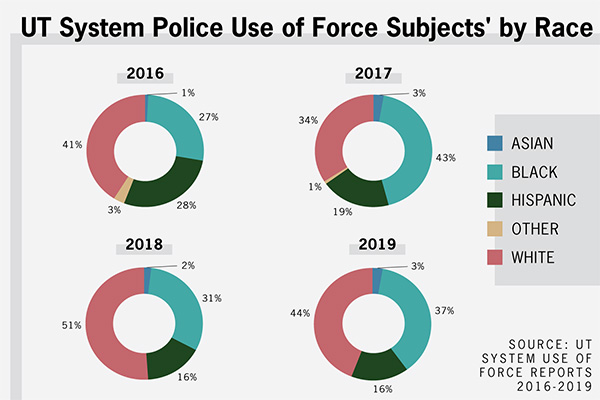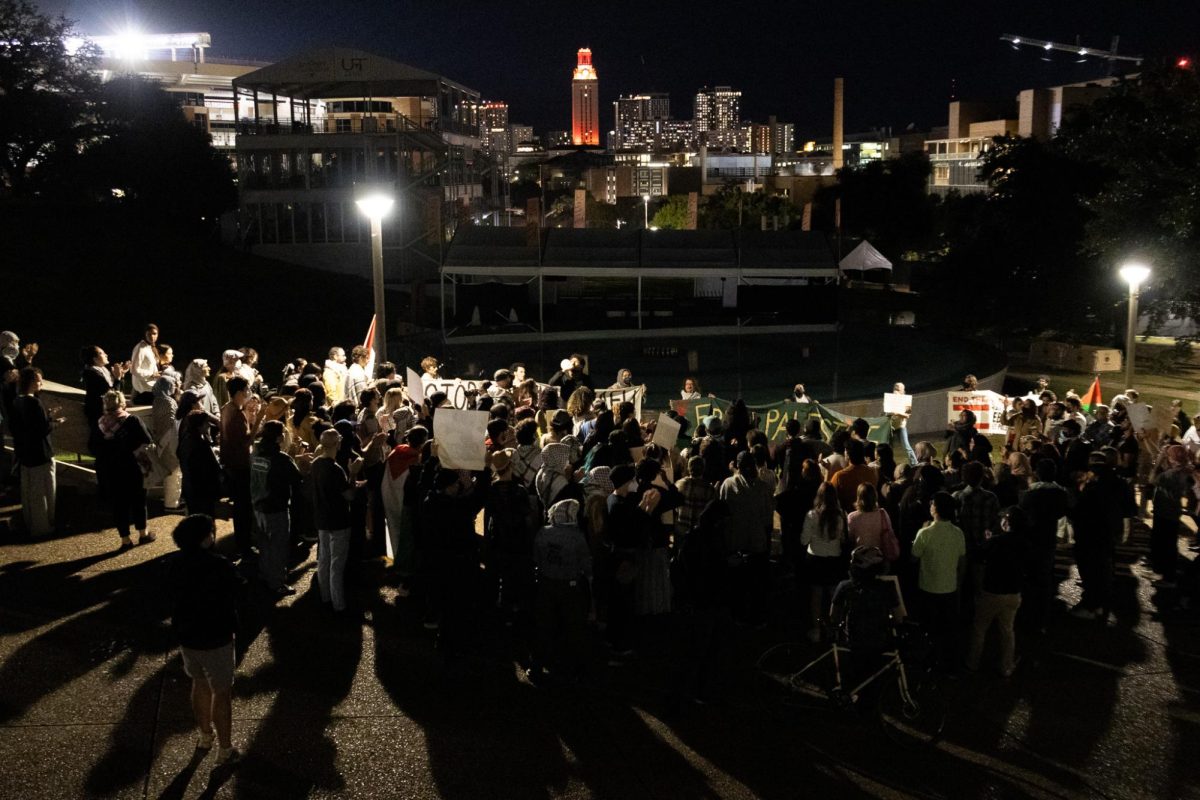The UT System law enforcement used force in 124 incidents in 2019, 37% of which were against Black people, according to the 2019 Use of Force report.
However, according to 2018 population estimates from the Texas Demographic Center, Black people account for approximately 11.8% of the state’s population.
Comparatively, 44% of the subjects were white, 16% were Hispanic and 3% were Asian, according to the 2019 Use of Force Report. Using the same benchmark of 2018 state population data, white people make up about 41.8% of the population, Hispanic people make up roughly 39% and Asian people make up about 5%.
56% of the people subjected to use of force by the UT System police are not affiliated with the involved institution, according to the 2019 report.
From 2016 to 2019, the percentage of Black people UT System law enforcement used force remained between 27% to 43%, according to each respective year’s reports.
Michael Heidingsfield, director of police for the UT System, said in an email that using the state population as a benchmark to compare the use of force demographic breakdown is “not necessarily reflective of the demographics in some of the urban areas in which University of Texas institutions are located.”
“It’s important to note that … we deliver public safety services … to a combined population in and around the respective institutions that is often mobile and transitory,” Heidingsfield said.
The UT System does not currently have an “adequate” population benchmark with which to compare data, Ruben Puente, assistant director for the UT System Office of the Director of Police, said in an email.
UT System law enforcement brought out a firearm on 39% of Black people subjected to use of force in 2019. In comparison, system police exhibited a firearm on 14% of white people subjected to use of force in 2019, according to UT System data obtained through a public information request.
In encounters with a white subject in 2019, UT System law enforcement exhibited, but did not fire, a taser 12.5% of the time and used the taser only 7% of the time. During encounters with a Black subject in 2019, UT System law enforcement exhibited a taser 4% but used the taser 15% of the time, according to the data.
“We are deeply concerned with every use of force event. That concern is reflected in both our choice to closely examine every such event (and) to engage an independent third-party to examine our racial profiling reporting,” Heidingsfield said in regards to the firearm and taser data mentioned above.
Ravi Shroff, who is an assistant professor of applied statistics at New York University and who researches methods to accurately measure gunfire-related crime, said it is hard to statistically prove or disprove racial discrimination or racial profiling. Commonly, experts would dispel any other potential reason for a data disparity before concluding the cause may be racial profiling, Shroff said.
Shroff said the firearm and taser statistics would be worth looking into for further investigation.
“This is certainly suggestive to issues related to discrimination and possible disparities, but maybe it's hard to say anything definitive (with the data as it stands),” Shroff said.
The involved officers are required to complete a report on each use of force event. That report is reviewed by the chain of command, including the chief of police, at the involved institution’s police department and then is forwarded to the UT System Office of the Director of Police for final review or action, Heidingsfield said.
The UT System also uses a third-party expert on racial profiling to perform quarterly audits at selected institution police departments and a full review at the end of the year, Heidingsfield said.
The UT System has not found any instances of racial profiling thus far, Puente said.
“We don't expect to find it. We will not tolerate it,” Puente said.
UT System law enforcement completes mandatory training that includes 128 hours of instruction related to racial profiling, de-escalation and use of force, Heidingsfield said.
Puente said he believes the training on racial profiling is effective.
“The very few numbers of complaints received indicates to us that our community policing philosophy in combination with our policies and practices are working,” Heidingsfield said.





















